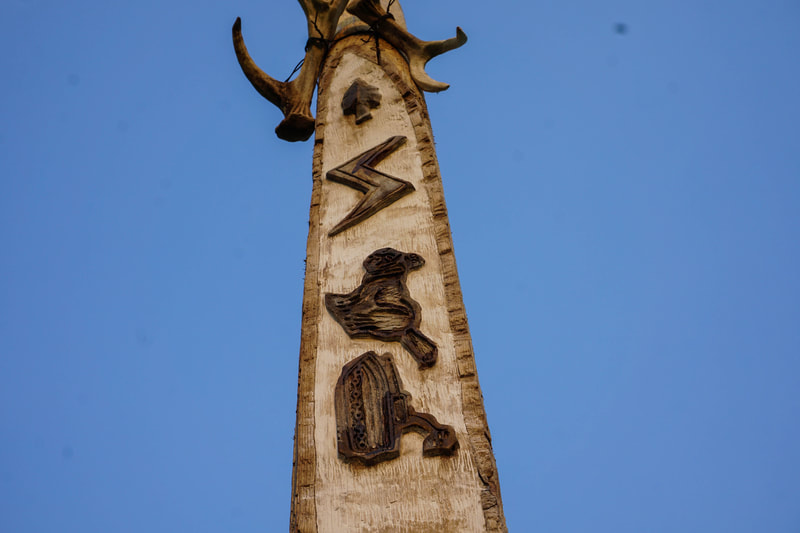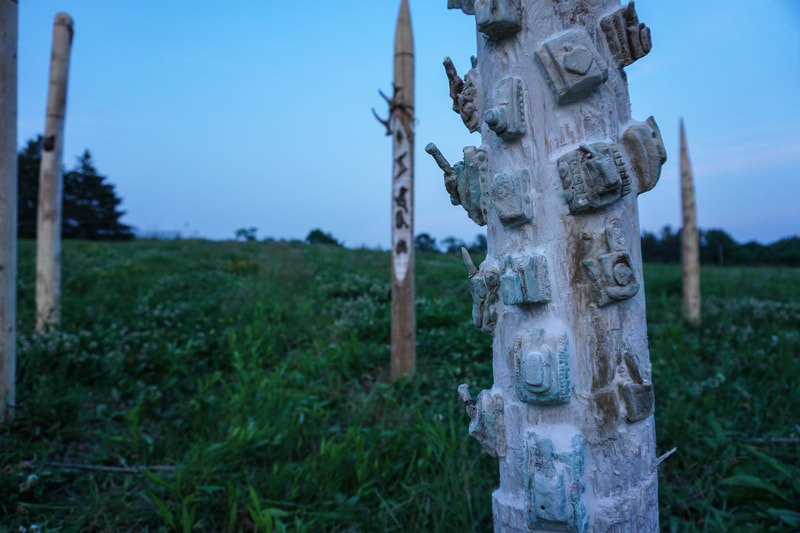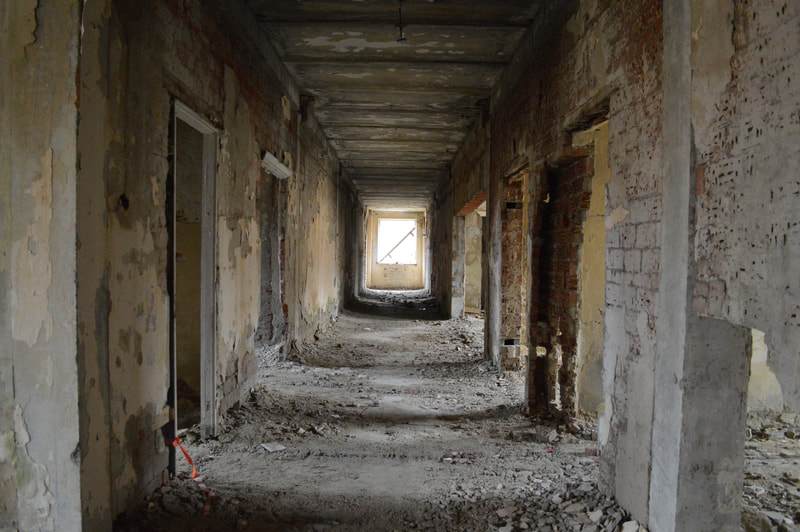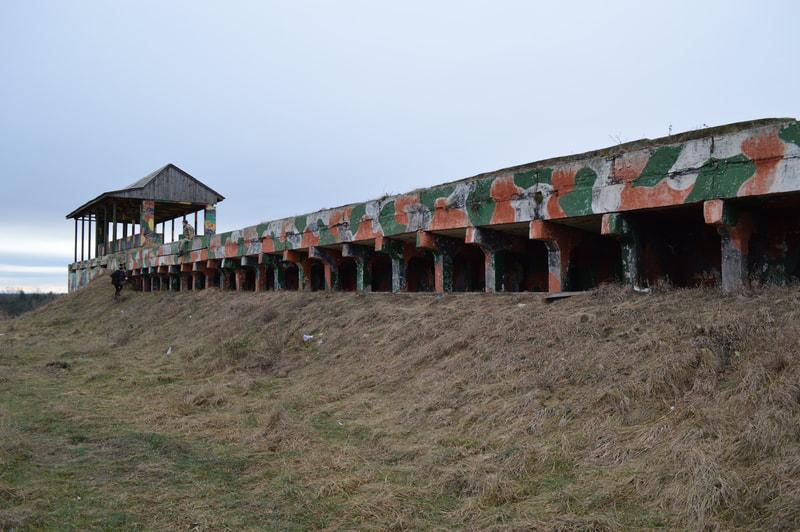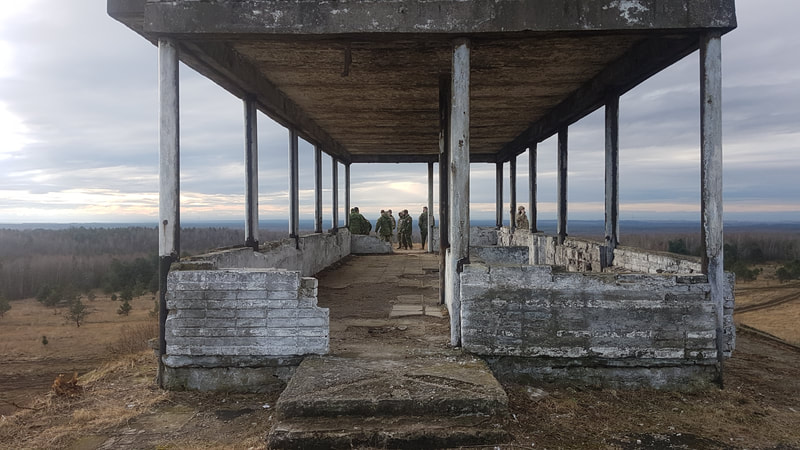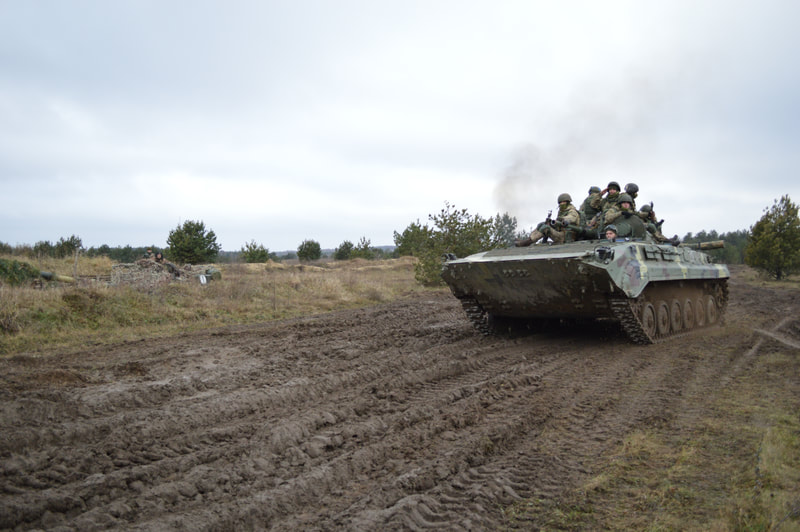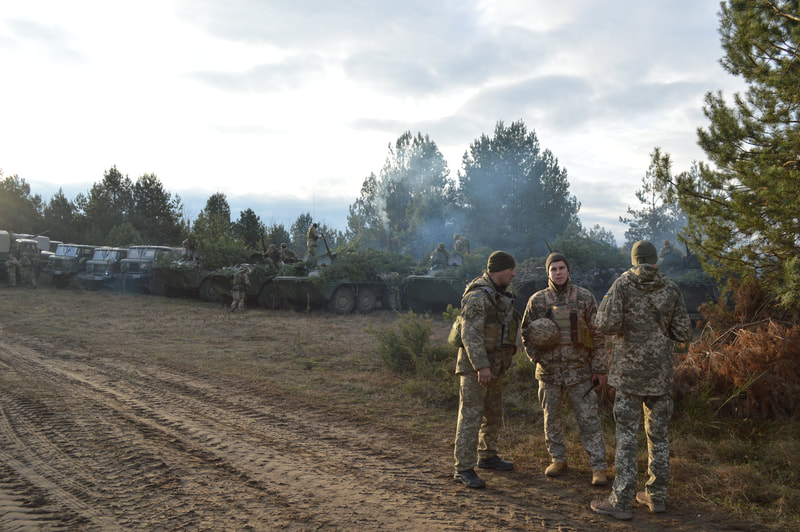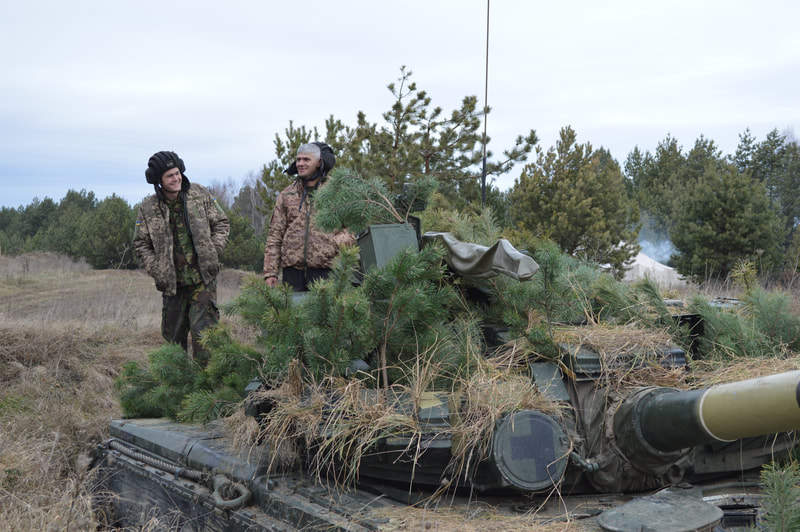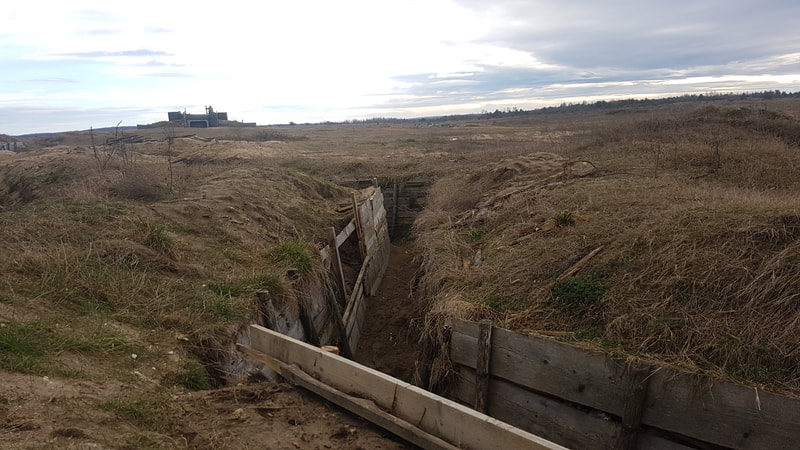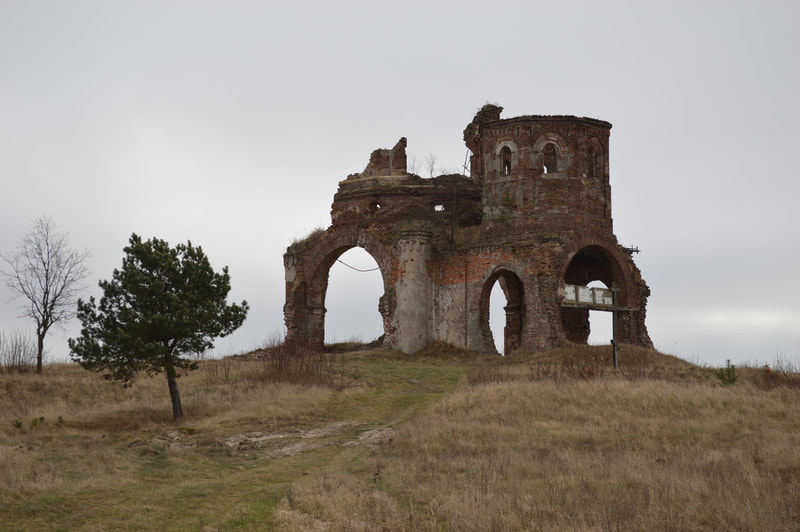In 2018 I was embedded with the Canadian Armed Forces in Ukraine with Operation UNIFIER as a part of the Canadian Forces Artist Program (CFAP). The goal of CFAP is to create a record of Canadian soldiers and their service across the globe.
While embedded with Operation Unifier, my initial intention was to explore and articulate how the people of the Canadian Armed Forces live, work, and express whole and complex lives while deployed. After I arrived, I was struck by the surreal ‘same-ness’ of the military. I was suddenly an outsider in a place where everyone appeared to be the same. They dressed in uniforms and lived in identical press-board cubicles in long rectangular buildings. They ate the same food at the same time. Even in leisure, routines are defined: they watched the same DVDs on tiny TVs, passed around the same books, and followed the same workout regimens.
I worked to find the moments that transformed these soldiers into individuals. Thinking in detail about the things that people make, carry with them, or how they decorate their spaces. I asked about earliest childhood memories, the meaning of tattoos, and if I could get a tour of their cubicle rooms. I asked to see good luck charms, and what was in their pockets. I asked about family, about mothers, sisters, and wives. I read letters from home. These little things are expressions of humanity and individuality in an institution built upon group homogeny.
Even in environments born of conflict and hostility, you can find profound moments of humor, creativity, and positive self-expression. When everyone is held to high standards of uniformity, sincere self-expression is power and resonates like a call to arms.
These seemingly insignificant moments became the installation titled ‘what we left behind’. Each of the nine cedar posts tells the story of an individual I met in Ukraine. Embedded in each post are small ceramic elements that capture my impression of the person. The ceramics are like inside jokes; based on fleeting moments.
Inspired by catalogs and records systems, each sculpture is titled with a number. These titles reference the date and time of the interaction that inspired the piece. The soldiers serving in the Canadian Armed Forces need to compartmentalize their lives. Hobbies, interests, and even personalities must be ‘left at the door’ when serving abroad. But like carefully accessioned museum artifacts, the parts of ourselves that we leave behind are worth attention.
Humanity can be expressed in simple ways. With these works, forgotten gestures, shared jokes, and even banal doings, are celebrated as meaningful as artifacts carefully preserved in institutions.
While embedded with Operation Unifier, my initial intention was to explore and articulate how the people of the Canadian Armed Forces live, work, and express whole and complex lives while deployed. After I arrived, I was struck by the surreal ‘same-ness’ of the military. I was suddenly an outsider in a place where everyone appeared to be the same. They dressed in uniforms and lived in identical press-board cubicles in long rectangular buildings. They ate the same food at the same time. Even in leisure, routines are defined: they watched the same DVDs on tiny TVs, passed around the same books, and followed the same workout regimens.
I worked to find the moments that transformed these soldiers into individuals. Thinking in detail about the things that people make, carry with them, or how they decorate their spaces. I asked about earliest childhood memories, the meaning of tattoos, and if I could get a tour of their cubicle rooms. I asked to see good luck charms, and what was in their pockets. I asked about family, about mothers, sisters, and wives. I read letters from home. These little things are expressions of humanity and individuality in an institution built upon group homogeny.
Even in environments born of conflict and hostility, you can find profound moments of humor, creativity, and positive self-expression. When everyone is held to high standards of uniformity, sincere self-expression is power and resonates like a call to arms.
These seemingly insignificant moments became the installation titled ‘what we left behind’. Each of the nine cedar posts tells the story of an individual I met in Ukraine. Embedded in each post are small ceramic elements that capture my impression of the person. The ceramics are like inside jokes; based on fleeting moments.
Inspired by catalogs and records systems, each sculpture is titled with a number. These titles reference the date and time of the interaction that inspired the piece. The soldiers serving in the Canadian Armed Forces need to compartmentalize their lives. Hobbies, interests, and even personalities must be ‘left at the door’ when serving abroad. But like carefully accessioned museum artifacts, the parts of ourselves that we leave behind are worth attention.
Humanity can be expressed in simple ways. With these works, forgotten gestures, shared jokes, and even banal doings, are celebrated as meaningful as artifacts carefully preserved in institutions.
|
02.12.1111/UNKNOWN
UNKNOWN PEOPLE MARK THEIR PLACE. THEY LEAVE MEMENTOS OF THEMSELVES TO SHOW THAT THEY EXIST AND WILL CONTINUE TO DO SO AS LONG AS THE MARKS REMAIN. MURALS AND MEMORIALS FOR CATS ARE RECORDS OF CONNECTION. 06.12.1705/PADRE HE CARRIED THE WEIGHT OF HIS ROLE AS A SPIRITUAL GUIDE SERIOUSLY. IN CONTRAST, HE PLAYFULLY DECORATED HIS PRIVATE SPACE WITH LEGO MEN DRESSED AS GREAT PHILOSOPHERS AND CHILDREN’S ART. 03.12.0835/FERDINAND TO SHOW ME HE WAS ALSO AN ARTIST, HE DREW ME A PICTURE OF CHAINSAW WIELDING STICK FIGURES TITLED 'ENGINEERS FIGHTING THEIR DEMONS’. THE JOKES HE CRACKED ALWAYS LIGHTENED THE MOOD. 04.12.1006/GAGNE HE LIVED WILDLY ACCORDING TO THE PHRASES 'CARPE DIEM' AND 'MEMENTO MORI'. ORNATE TATTOOS REMINDED HIM OF THIS PHILOSOPHY, BUT AFTER FIVE TOURS HE KNEW THE IMPORTANCE OF LIVING IN THE MOMENT. HE COLLECTED HANDMADE BELT BUCKLES AND RINGS. 05.12.1129/GUY HIS EARLIEST CHILDHOOD MEMORY WAS GETTING PINCHED BY A CRAB IN HAITI. HE TRAINED THE SOLDIERS IN TANK FORMATIONS – ARMOURED VEHICLES AND ANIMALS ARE A THEME IN HIS LIFE. TANK ARTISTS: CHARLOTTE CAMISSIO, AGE 2 CLARA D’ILARIO, AGE 6 HAYDEN DUNTSCH, AGE 10 HUDSON DUNTSCH, AGE 6 JAMES CAMISSO, AGE 6 07.12.1637/ELAINE IN A SEA OF MASCULINITY AND MINIMALISM, SHE UNAPOLOGETICALLY DECORATED HER SPACE WITH STUFFED ANIMALS AND FLAMINGOS. 07.12.1843/ALEX A TATTOO MEMORIALIZED HIS EARLIEST CHILDHOOD MEMORY OF RUNNING WITH PEACOCKS. MY EARLIEST CHILDHOOD MEMORY INCLUDES A PEACOCK AS WELL. 01.12.1845/JESSICA SHE CARRIED HER BENT HOUSE KEY IN HER POCKET FOR GOOD LUCK. I HAVE NEVER MET ANYONE AS ENTHUSIASTIC ABOUT CAMOUFLAGE PATTERNS AND MILITARY INFRASTRUCTURE. 02.12.1232/ANDY ANDY IS AN ARTIST. HE USES HIS SPARE TIME IN THE MACHINE SHOP TO MAKE FURNITURE AND CARVINGS WITH SCRAP MATERIAL. |
|


